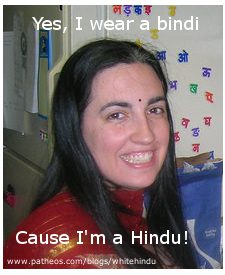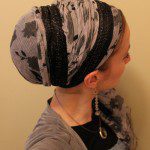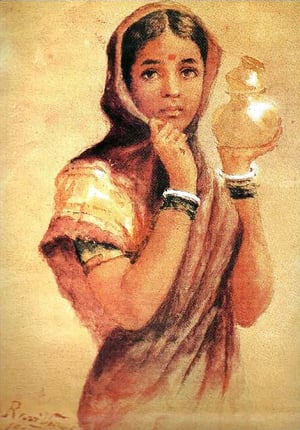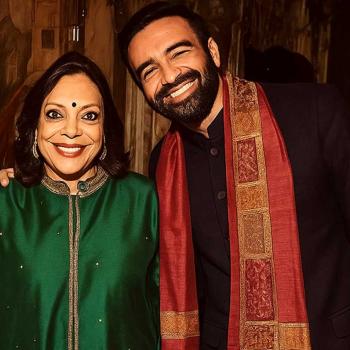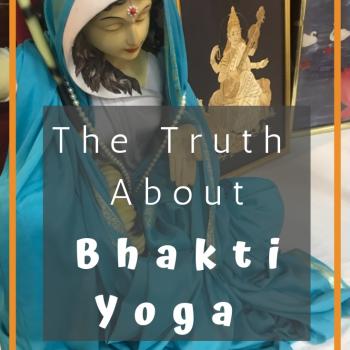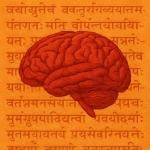It’s always fascinating to me how many concerns and issues are the same across different religious communities. I enjoy reading the essays and stories of other young people who are religious, whether they are Jewish, Muslim, Christian, or something else. The other day I ran across this great blog written by a Jewish woman who covers her hair.
She has a number of posts talking about visibility as a Jew.
She wears a head covering that is distinctly Jewish and so marks her as a member of that community. Yet in some parts of America, it isn’t known that that’s what that head covering means and perhaps it simply looks like a style choice and not a religious expression.
In a guest post another young Jewish woman said:
“Visibility is…an interesting problem because I’ve found there’s a difference between looking different and being visible as a member of a group. There’s a strange space between passing and proclaiming identity where I look different from everyone else, but my surrounding culture lacks the necessary cues to identify me…I never know if the statement I’m making is the same one other people are hearing. “
I just want to say “Exactly!” to that. If I present myself in a Hindu way, it doesn’t identify me as Hindu unless the people around me know what a Hindu is and what they might wear or do.
Also, she noted that Jewish women can “pass” more easily than other religions with head coverings because Jewish women can wear hats. Hats are a head covering that also obscure and hide the reason for that head covering.
There is a difference between her ability to pass with her head covering and a Sikh man whose head covering gives him away immediately as religious. http://howtocover.blogspot.com/2013/11/a-sikh-and-jew-walk-into-airport-and.html
These are things that I also think about a lot. By default I “pass” as non-Hindu. There is nothing about me that looks visibly Hindu and that often bothers me. I want to be identified as part of the group to which I belong.
The visible mark that I have used is wearing a bindi. But I am all too aware that I can exercise my privilege by simply not wearing it. I can take it off when it’s convenient for me and then am easily part of the dominant culture.
In fact, I haven’t been wearing it outside of Hindu functions for a while now. It stands out so much. It confuses people, causes questions, makes me feel like there is a spotlight on me all the time. And the very definition of privilege is that I can take it off and all that immediately goes away!
At times visibility as a Hindu feels very important to me and then at other times it doesn’t; at those times it feels like enough that I know I’m a Hindu and no one else has to believe me.
From a different blog I saw a woman give an explanation for why she wears a hijab that sounded like exactly why I wear a bindi:
“I do it because I’m proud to know God the way that I do and I want people to know that about me. Adopting this cultural symbol is the most efficient way of doing this.”
Proud to know God in the way that I do. Yes, that is exactly what I feel.
Bindis, of course, can also be interpreted as a fashion choice rather than a religious choice. If you want to wear a colorful or sparkly bindi or match your outfit, then you look more like an oblivious culture-thief. My experience is that the bindi comes across as a religious decision as long as I’m wearing a small and plain bindi (previously black, now red).
Should I really be making a choice about when I wear it and when I don’t? Should I make a commitment to always wear it rather than picking and choosing when I want to identify and when I don’t?
Here is another Jewish woman talking about “hiding” behind a wig and the different reactions based on whether she’s wearing a wig or a headscarf: http://www.tabletmag.com/jewish-life-and-religion/135012/fashion-looking-hasidic
“Still, I feel like a mime on a tightrope; part of me wants to be invisible, unremarkable, yet obviously, since I now wear a headscarf, I want to be able to convey—proudly, without fear— that I’m a religious Jewish woman.”
Another great question the Jewish blogger asked was about appropriation.
“Is borrowing from the past as inappropriate as borrowing from other contemporary cultures? How appropriate is it to borrow from Jewish cultures that aren’t your own ethnic background?… But when the question is- which group affiliation is dominant- religious community (which dictates the practice that is shared) or ethnic community (which dictates the style that someone wants to copy), how do those things interact? Does the passage of time change any of these factors? Do I still have ownership and identity connections to a style my great-great-great grandmother last wore, and which I likely have never heard of or seen? What if I’ve seen it in a museum?”
It’s interesting to me that this is a question for her. I always think that if you’re Jewish, then all of Judaism is yours to use and be. Apparently it is not that simple and American Jews are facing some similar questions to non-Indian Hindus.
I think Hinduism, as it continues to expand and spread, can learn a lot from Judaism in how it deals with ethnicity and religious identity. Judaism used to be strongly associated with one ethnic group. Now it has expanded a lot. There is still what people would consider a “Jewish look” but most people also realize that there are many many Jews who don’t fit that stereotype.
For those Jews that don’t look stereo-typically Jewish, how do they declare their identity in their day to day lives? How do they make themselves visible as Jews?
Visibility for minority religions and groups is important, I think. If no one is identifiable as anything other than the default white Protestant (WASP, as it is called here) then we forget the diversity of experience of our neighbors. We all benefit from the diversity of America. Things become stale when you don’t have multiple perspectives and ways of looking at things. Better solutions for problems are found by drawing on the different beliefs and understandings of multiple kinds of people.

